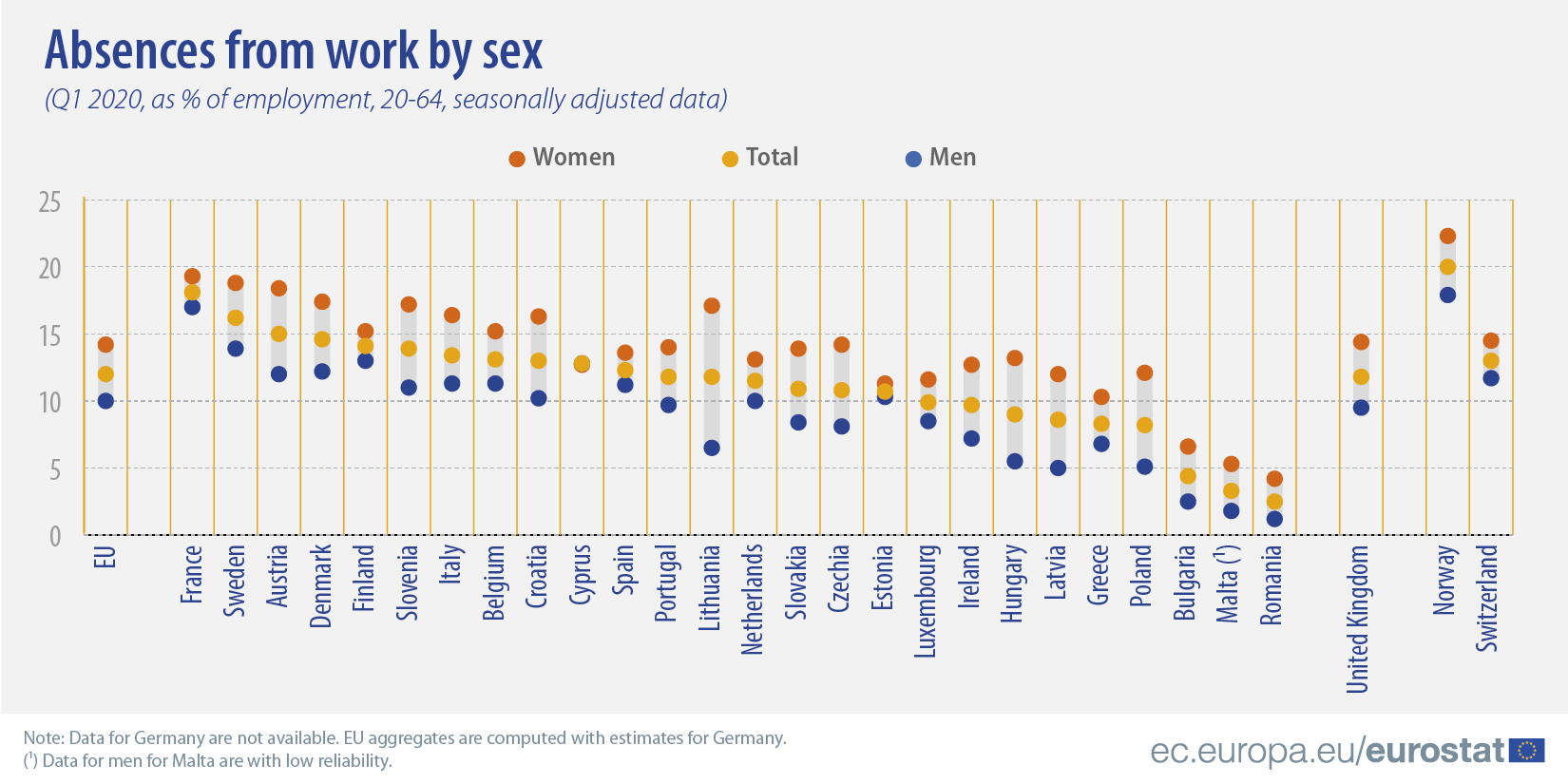In the EU, 9.7% of employed people were temporary absent from work in the last quarter of 2019, while 12.0% of them were in this situation in the first quarter of 2020, which corresponds to an increase of 2.3 percentage points (p.p.).
Among the EU Member States for which data are available, the highest rates of temporary absences from work in the first quarter of 2020 were observed in France (18.1%), Sweden (16.2%) and Austria (15.0%), and the lowest rates in Romania (2.5%), Malta (3.3%), and Bulgaria (4.4%).
This is the first quarter in which the labour market across the EU has been affected by the COVID-19 measures taken by the EU Member States.
Spotlight on gender differences
Men and women in employment were not equally absent from work in the first quarter of 2020.
In all EU Member States, except Cyprus, shares of temporary absences from work were higher among women than men. The largest difference was observed in Lithuania, where the share of absences among women was more than two and a half times larger than among men (17.1% for women compared to 6.5% for men).
The gap between the absence rates for men and women was also large in Hungary (13.2% for women and 5.5% for men), Poland (12.1% for women and 5.1% for men) and Latvia (12.0% for women and 5.0% for men).
Source datasets: lfsi_emp_q and lfsi_abs_q
For more information:
- Today’s news release on EU labour market in the first quarter 2020
- Statistics Explained article on Absences from work - quarterly statistics
- Statistics Explained article on Labour market slack - quarterly statistics
- Statistics Explained article on Hours of work - quarterly statistics
Methodological notes:
- The notion of temporary absence from work refers to situations in which a period of work is interrupted by a period of absence. This implies that persons are generally to be considered as having been temporarily absent from work and therefore employed, if they had already worked at their current activity and were expected to return to their work after the period of absence.
- Persons can be absent from work due to a number of reasons, among which holidays, own illness, and temporary lay-offs.
- Temporary lay-offs are classified as employed if they have an assurance of return to work within a period of 3 months or receive 50% of their wage or salary from their employer.
Note: The European Union (EU) includes 27 EU Member States. The United Kingdom left the European Union on 31 January 2020. Further information is published here.
To contact us, please visit our User Support page.
For press queries, please contact our Media Support.


